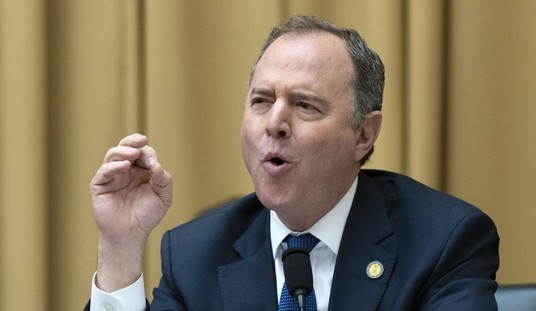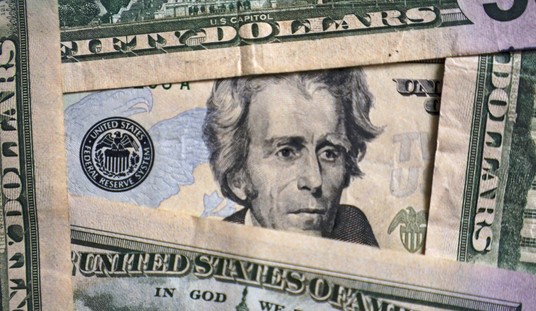In presiding over the trial of George Zimmerman, who is accused of murdering Trayvon Martin, Judge Debra Nelson has made some awful rulings — none worse than failing to direct a verdict of acquittal on the preposterous second-degree “depraved mind” murder charge. The state’s evidence that Zimmerman had the necessary criminal intent is non-existent, much less sufficient to meet the “beyond a reasonable doubt” standard. Compelling evidence, moreover, establishes that Zimmerman acted in self-defense, a claim the state has not come close to refuting. (See Andrew Branca’s comprehensive summary here.)
Wednesday morning provided a snapshot of Judge Nelson’s style: her peremptory decision to exclude exculpatory evidence recovered from Martin’s cellphone — a ruling that in and of itself could be reversible error if the state is able to steamroll the jury into convicting Zimmerman.
At issue are ostensibly deleted texts and photos recovered from Martin’s cellphone, well described in Bob Owens’s post. (Side note: deleted rarely means disappeared — much of what you may think you’ve deleted from a computer can be recovered by a competent examiner.) Although the evidence won’t be covered much by the mainstream media so desperate for a conviction in this case, it would be of interest to good faith journalists since it cuts sharply against their legend of the saintly, boyish Trayvon. Reportedly, the data haul reveals his self-proclaimed fighting prowess as well as involvement with guns, drugs and porn. (If this were Zimmerman’s cellphone, don’t doubt that you would have been inundated for months with the details about its contents.) Only some of that evidence, however, would be relevant to the issues in the trial, which, for present purposes, is our concern.
In a hurried oral ruling from the bench Wednesday morning, after a late-night argument among the trial’s fatigued participants, Judge Nelson suppressed the evidence. She did not explain the ruling very coherently. To understand it as best we can, we must piece together her rambling remarks during Tuesday night’s oral argument (courtesy of Legal Insurrection, we find the video), since all she did Wednesday was reaffirm what little she had already said.
The ruling is troubling on two scores. First, there are two issues to be decided on admissibility: (1) relevance (is the evidence probative on some contested issue in the case?) and (2) authenticity (are there reasonable grounds to believe the evidence is what it purports to be — in this instance, Martin’s electronic communications?); yet Nelson appears to have addressed only one of them, authenticity (beginning at the 8:15 mark of the video). Second, she has gotten the authenticity question wrong.
It is worth explaining why this suppression issue is so significant and how a good judge would go about deciding it. There is nothing more momentous in a criminal trial than a decision by the court to preclude defense evidence. Because of double-jeopardy principles, the prosecution does not get a do-over: if the state’s evidence is erroneously suppressed and the defendant is acquitted, the state does not get to appeal. But a convicted defendant does get to appeal. Since an accused has a constitutional right to present a defense, which means an opportunity to have the jury consider all admissible exculpatory evidence, nothing is more likely to get a judge reversed on appeal than a ruling that bars defense evidence.
Knowing the appellate court is going to scrutinize such a ruling with great care, particularly in a murder case in which the defendant will be severely sentenced if convicted, a good judge is going to be very exacting. After ensuring that the admissibility issues are fully developed on the record — which should be done in writing where possible for evidence of obvious importance – the judge will then rule, fully addressing each contested issue. This does two important things: (1) it gives the appellate court the benefit of the judge’s analysis and the confidence that the judge gave the matter the careful attention it deserved; and (2) it prevents the defense from manufacturing new admissibility arguments on appeal — if defense counsel was given a fair opportunity to make his points, the points he fails to make are waived. If the judge fails in her responsibility to make a good record, there is no limit on the imagination of defense lawyers to come up with ways the suppression of the evidence must have led to the conviction.
Given all that, Nelson’s failure to address the relevance of the evidence is a glaring default. The only rational explanation is that the relevance was so palpable that commenting on it seemed superfluous.
The state claims that Zimmerman was an aggressive stalker who murdered Martin after instigating a deadly physical confrontation. The prosecution argues, moreover, that (a) the shooting was caused by Zimmerman’s purported hatred for Martin (whom he did not know), coupled with his supposed depraved indifference for human life; and (b) Zimmerman was not lawfully acting in self-defense. Zimmerman counters that he was attacked and brutally beaten by Martin, a patently capable brawler, before, in justifiable fear of his life, firing his (lawfully carried) gun. The cellphone evidence reportedly contains conversations in which Martin discussed his street-fighting exploits with various family members and associates – including a request by Martin’s half-brother that Trayvon teach him how to fight.
To grasp how palpably relevant this evidence is to issues the state has put in play, ask yourself what the prosecutors would be saying if this had been Zimmerman’s cellphone containing evidence of his pugilistic skills. Think for a moment of the absurdly extravagant inferences prosecutors are asking the jury to draw about Zimmerman’s state of mind from off the cuff remarks (e.g., “these f***ing a******s always get away” and “f***ing punks”) made to the police dispatcher while he was watching Martin (because, you know, depraved-mind murderers always call the police to give them a real-time, blow-by-blow account). Is there any way such prosecutors would abide a defense claim of irrelevance regarding direct admissions by Zimmerman of his fondness for and adeptness at street-fighting? This is not a situation where the defense is claiming that evidence of Martin’s involvement in criminal activity is admissible to show he was a bad guy and therefore probably at fault. We are talking about evidence of traits of Martin’s that are directly relevant to issues the prosecution itself has raised.
Perhaps that is why the prosecution is reduced to the silly contention that when the word “fight” is used in Martin’s conversations, it could have been “code” for something else. Again, given the case they have presented, these prosecutors are in no position to claim that evidence should be excluded because it might cause the jurors’ imaginations to run wild. As defense lawyers pointed out, they were not looking to interpret Martin’s conversations — just place his statements before the jurors and let them apply their common sense. The prosecutors could then roll out their fanciful “code” rebuttal and see how far that gets them.
In any event, even if relevance is clear, that hardly excuses Judge Nelson’s failure to address it. As a former prosecutor, I winced in embarrassment watching the prosecutor’s argument, but that doesn’t change the fact that relevance is a contested issue. Judges have an obligation to rule on those when they are excluding exculpatory evidence in a murder case. Nelson punted.
The judge appears instead to have relied solely on the evidence’s purported lack of authenticity — specifically, how can we be sure that the texts and other communications on Trayvon Martin’s phone (which include photographs of Trayvon Martin) are really Trayvon Martin’s? After all, Judge Nelson sputtered, there are plenty of tech-savvy seven-year-olds who know how to access computer programs and send texts, tweets, emails, etc. How do we know that someone else didn’t use Martin’s phone to send the messages about fighting (or, I suppose, whatever “fight” was “code” for)?
The short answer to this is that legal authenticity does not require that kind of certainty. The rules of evidence are designed to promote the admissibility of relevant evidence – they err on the side of letting the jury consider evidence unless it is patently ripe with unfair prejudice (i.e., would lead the jury to decide a case based on inflamed passions or utter confusion). Authenticity, in particular, is generally — as we say in the biz — “a matter of weight not admissibility.” That is, if there is a reasonable chance that the thing at issue is what its proponent purports it to be, courts are supposed to favor admitting it into evidence while giving the opposing party lots of leeway to attack its significance on cross-examination and in summation arguments.
Here, we are talking about messages that were not only on Martin’s own phone but were concealed under a “stealth” application. In effect, they were double password protected: the password needed to use the phone plus the password needed to access the stealth app. Furthermore, there are apparently hundreds of messages, such that, if necessary, it should be straightforward to establish signature communications patterns that can identify the user.
Besides the nonsense suggesting that maybe a child purloined Martin’s phone, pierced the double-password protection, and sent the pertinent messages, Judge Nelson also inappositely compared the case to one where a proponent is trying to get emails admitted. Some courts have reasoned that you cannot tell, just from the email itself, whether it was sent by the person assigned the sender email address. In my mind, that is a matter of weight, not admissibility in any event; here, though, we do not just have the messages, we have the phone from which they were sent — a phone configured in a way that indicates the user made it difficult for anyone other than himself to send and access messages.
Judge Nelson indicated that she had reviewed an authentication precedent the defense had pressed on her, the 2010 Florida case of State v. Lumarque. Typical of Nelson, she said it did not change her mind but provided no further insight, much less a rationale for distinguishing it. Like my ever-astute colleague William Jacobson — the Cornell law prof behind the invaluable Legal Insurrection site — I think the judge has committed reversible error by excluding this evidence. But while Lumarque should certainly have helped Zimmerman, I am not quite as persuaded by it as Bill seems to be.
Lumarque involved salacious images and text messages on the cellphone of a woman who was beaten by her ex-husband. The trial judge excluded some of them because the woman could not authenticate them as her own. The appellate court reversed the conviction, holding that the exclusion was erroneous because the evidence came from the woman’s own phone even if she could not identify it. But in Lumarque, the issue was the defendant ex-husband’s motive for the assault; obviously, he was enraged at finding sexually explicit messages between the woman and her boyfriend, regardless of whether they’d been sent by the woman or someone else. In the Zimmerman case, by contrast, the information has nothing to do with explaining Zimmerman’s behavior; the messages about fighting are relevant only if they come from Martin himself. Judge Nelson could thus have reasoned that the authentication standard should be higher. Of course, she didn’t tell us, so we don’t know.
In any event, Lumarque does remind trial judges that authentication is a low hurdle — admit the evidence but allow vigorous cross-examination. In this case, there was even greater reason than usual to follow that wisdom. It goes without saying that the best authentication witness, Martin, is not available. Further, there are allegations that prosecutors delayed for months — until June 4, just a few weeks before trial, the busiest time for litigators — before disclosing the cellphone evidence. The defense’s authentication showing was more than adequate, and these attendant circumstances should have lowered their burden. Nelson inexplicably raised it.
This prosecution is a travesty.









Join the conversation as a VIP Member